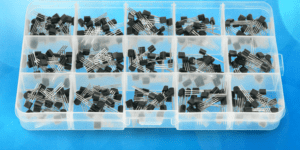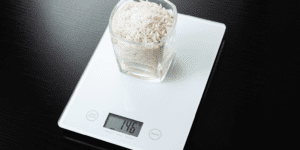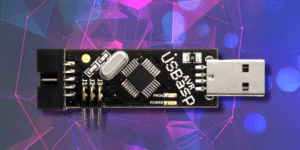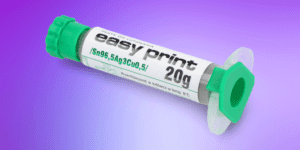3D printing technology is becoming more and more affordable and is also subject to further development. Thanks to this, we can print objects with different geometries with increasingly higher accuracy. To print our favorite objects on a 3D printer, you will need a secondary raw material known as filament. Most often it is in the form of a rope wound on a rotating spool. In this article, we present a short description, advantages and disadvantages of the most popular 3D printing filaments for hobbyist purposes.
PLA filament
Most beginners starting their adventure with 3D printing most often choose PLA (polylactic acid) as filament. The PLA is a polymer, which is obtained from natural raw materials such as corn meal. One of the main advantages of this filament is that it is 100% biodegradable and non-toxic. Another practical advantage of this filament is that it does not require a high heating temperature. Already at the level of approx. 190°C – 200°C, PLA filament can be easily melted during the printing process. In addition, the PLA filament does not require a heated bed, which makes work much easier and allows printing on printers that are not equipped with a heated bed (especially cheaper models of 3D printers offered on a market). Objects printed with PLA are characterized by very good aesthetics, and the level of detail reproduction in relation to the raw digital file is at a really good level! But, unfortunately, PLA also has its drawbacks. First of all, PLA is very hard, making it prone to breakage. This defect will be especially noticeable if the printed element is operated under a sufficiently high mechanical load. Another disadvantage is the limited range of the ambient temperature. PLA printed elements can be used at a maximum temperature of approx. 50°C – 70°C. After exceeding this temperature, PLA shows a greater tendency to soften.
PETG filament
Another commonly used material for 3D printing is glycol-modified polyethylene terephthalate, known for short as PETG. The basic version of this material – PET – is used in the production of beverage bottles. But only by adding a glycol admixture, the basic possibilities of processing this material are significantly extended. Printed objects made of PETG are very aesthetic in the end result, and at the same time the material shows a low tendency to shrink, thanks to which the final printout is characterized by a very good representation of the shape and dimensions of the design in the digital file. PETG filament is available in many color varieties, as well as color-transparent. Thanks to this, we can print objects such as a translucent lamp shade. PETG filament shows greater elasticity in relation to PLA and thus it is more resistant to higher mechanical loads, and also holds its shape up to a temperature of approx. 80°C. On the other hand, the main disadvantage of PETG filament is the high printing temperature – in order to melt the PETG filament to a temperature sufficient for the printing process, the 3D printer nozzle must be heated to approx. 250°C and a heated bed is necessary. Before printing with PETG, it is recommended to increase the initial position of the head, because PETG shows very good adhesion to the surface and problems with detaching the printed object from the table may occur.
ASA filament
ASA is a synthetic copolymer that is a composite of acrylonitrile, styrene and acrylates. Its physical properties are very similar to another popular filament, i.e. ABS plastic – the second most commonly used material in 3D printing after PLA. This material is characterized by very good mechanical strength and resistance to high temperatures (even up to approx. 110°C without the risk of deformation), as well as UV radiation. Thanks to this, ASA is an excellent material for the production of items that may ultimately be exposed to sunlight (e.g. furniture and garden decorations). Objects printed with ASA retain high fidelity to the digital prototype. An important advantage is also easy processing of the material, without the risk of damage. Unfortunately, ASA has a high shrinkage tendency, so before printing, you should set up a climate chamber that will keep the print zone temperature slightly above room temperature. ASA also shows less adhesion to the table, which requires a heated bed with a temperature slightly above 110°C.
Which filament should I choose?
Currently, over a dozen different filaments are used in the 3D printing technique. Here are some of the most commonly used for hobby purposes. All of them show differences among themselves, thanks to which our choice should depend on the target destination. If you are looking for a good filament dealer, visit the Botland store – the offer includes filaments with different material, color and weight.

How useful was this post?
Click on a star to rate it!
Average rating 4.4 / 5. Vote count: 5
No votes so far! Be the first to rate this post.






